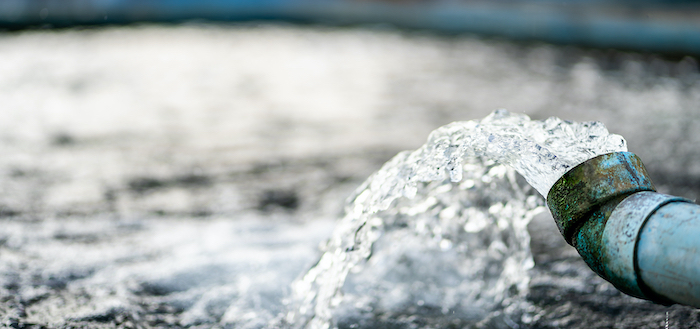Asbestos Could Be in Drinking Water

Asbestos exposure can cause many illnesses, including mesothelioma, lung cancer and asbestosis. Asbestos poses a risk when ingested or inhaled.
Many products manufactured before 1979 contain asbestos, including water pipes. Water pipes were often made with asbestos cement. Now, these pipes face wear and tear or damage, potentially contaminating drinking water with the mineral.
Request a Free 2025 Mesothelioma Guide
How Does Asbestos Get Into Drinking Water?
A major concern is asbestos entering water from aging cement water pipes. Cement piping contained asbestos because it was:
- Cheap
- Resistant to corrosion
- Low friction
- Provided strength
Asbestos in some products may not pose a risk if undisturbed. However, it is common for products such as asbestos pipes to face damage. As water pipes age, the cement can crumble, crack, chip or break. Damaged piping can cause asbestos to enter drinking water traveling through the pipes.
Other Ways Asbestos May Enter the Water Supply
There are several other causes of asbestos water contamination. Researchers have found asbestos can enter water after:
- Landslides move asbestos deposits into water supplies
- Hurricanes, tornadoes and other storms damage structures containing asbestos near bodies of water
- Improper disposal of asbestos-containing materials
- Airborne asbestos settles in water supplies
Asbestos may occur in the environment from natural asbestos deposits or asbestos disposal sites. Many structures contain the mineral in insulation, flooring, roofing and other construction materials.
How Dangerous Is Asbestos in Drinking Water?
More research is needed to determine the level of risk asbestos poses in drinking water. No level of asbestos is safe, but there is still not a complete asbestos ban in the United States.
The World Health Organization (WHO) notes limited evidence on asbestos carcinogenicity in drinking water. It also states “most of the population of the USA consumes drinking-water containing asbestos in concentrations below 1 MFL (million fibres per litre).”
Additional information is available in Asbestos in Drinking-water: Background document for development of WHO Guidelines for Drinking-water Quality.
Are There Regulations for Asbestos in Drinking Water?
Various regulations seek to prevent harmful asbestos exposure. Organizations tasked with keeping water safe include:
- World Health Organization (WHO)
- Centers for Disease Control and Prevention (CDC)
- Environmental Protection Agency (EPA)
- Agency for Toxic Substances and Disease Registry (ATSDR)
EPA groundwater regulations deem more than 7 million asbestos fibers per liter (MFL) as unsafe. The EPA states asbestos groundwater contamination comes from “decay of asbestos cement in water; erosion of natural deposits.”
The EPA set the 7 MFL limit based on existing evidence. These regulations aim to keep contaminants at levels low enough to protect human health. The EPA’s drinking water regulations fall under the Safe Drinking Water Act of 1974.
How Is Asbestos Removed From Drinking Water?
Drinking water undergoes an extensive treatment process to remove harmful contaminants.
Filtration may remove asbestos fibers from water.
Water is typically filtered through fine granules such as sand, gravel or charcoal. This occurs before disinfection to remove bacteria, germs and other foreign bodies. At times, additional precautions may be preferred or advised.
Many individuals opt to have home water filtration systems as an added precaution. Public health officials may also advise local precautions. For example, they may suggest bottled water after potential contamination from a natural disaster.
The CDC outlines strategies, goals, tips and other information about safe drinking water on their website.